|
SANTA FE, NM — Moving Arts Española is thrilled to announce a collaborative project with the Museum of International Folk Art in conjunction with the exhibition Between the Lines: Prison Art & Advocacy. This powerful initiative shines a light on the Española Valley and its triumph over negative stereotypes and stigmas—as seen through the eyes of its youth. At the heart of the project is a short film ‘Painting Our Stories’ created and led entirely by local teens at Moving Arts Española. The film highlights a collection of deeply personal stories from intergenerational community members, murals and public art throughout the Española Valley, exploring how these works have served as outlets for expression and the resilience that heals. The Moving Arts Interns who have worked tirelessly on this project for nine months are Eliseo Delgado, Eduardo Maes, Chelsea Sisneros, Desmond Garcia, Jenesis Barela, Lilliana Gallegos, and Zayden Martinez. The event includes a special reception and film screening featuring: a youth-driven short film, a panel conversation with young filmmakers, live performances, youth-made installation art and refreshments catered by the Moving Arts Healthy Meals Program, Saturday, August 30 from 1:00–4:00 PM at the Museum of International Folk Art. The event is free for New Mexico residents for one day only. If you cannot attend the Moving Arts portion of the event, the Between the Lines: Prison Art & Advocacy exhibition remains on view through September 2nd. This project reflects the resilience and creativity of the Española Valley community, celebrating youth voices and the power of art as a tool for healing and advocacy. Acknowledgments: Major support for this project in conjunction with Between the Lines: Prison Art & Advocacy has been provided by the Ruth M. Knight Foundation, Cielo Foundation Boulder, Elaine and Harvey Daniels, Friends of Folk Art, Frost Foundation, and the International Folk Art Foundation, with additional generous support from Rosalind Doherty, Jay Ihrig, Mark Naylor and Dale Gunn,Courtney and Scott Taylor, ToKo Santa Fe, Lewis & Dilworth Family Fund, and the New Mexico Exhibition Development Fund. Moving Arts provides access to creative and experiential learning in a holistic environment. A place where children and youth can safely explore their interests, expand their knowledge, and grow into confident contributors within their community. For more information about Moving Arts Española or to support youth leadership initiatives, visit movingartsespanola.org Email: [email protected] Phone: 844-623-2787 Website: movingartsespanola.org ###
0 Comments
Reed Society for the Sacred Arts to bring music and calligraphy to Abiquiu, October 2-6 By Karima Alavi Sacred music will be echoing across the valleys of Abiquiu soon with the arrival of the famed Reed Society, an organization that protects the timeless heritage of traditional artistry in many fields. As their website at reedsociety.org states: Through a global network of master artists and musicians, the Reed Society cultivates harmony, on paper and in the world, by honoring the timeless bond between student and master. A variety of musicians affiliated with the Reed Society have performed at venues including the Kennedy Center for Performing Arts, the Diyanet Center of America, and The Smithsonian’s National Museum of Asian Art, where a performance was led by Master Bilal Chishty, one of the last students of the legendary maestro, the late Nusrat Fateh Ali Khan. You can view that performance here: https://www.youtube.com/watch?v=JEWS8dg4Dtg Traditional Islamic Arts: “Islamic Art” is a term used to describe art produced within the region of the world populated predominantly by Muslims. Historically, this would have meant the area stretching from Spain to China. However, with the spread of Islam across the modern world, one can find artists producing Islamic Art in places as diverse as England, Germany, and Abiquiu, New Mexico.
Western art also depicted Greek gods, heroes, Christian deities, and saints, something strictly forbidden within an Islamic context where art is used as a reminder that god is everywhere, and cannot be depicted by a mere human artist. Islamic art is dominated by sacred geometry, stylized floral designs called “Arabesques,” and calligraphy, which will be the focus of this article. (See my August 8, 2025 article for information on the use of sacred geometry and the Arabesque in Islamic art.) Within the Islamic aesthetic tradition, calligraphy is considered to be the most deeply connected to faith, prayer, and religious practice. All three of these artistic forms reflect the idea that divine creation has an underlying rhythmic balance behind everything we experience in the material world. God, however, is completely abstract. Therefore, the traditional arts of Islam are also abstract, hence the turn toward geometric patterns, arabesques, and calligraphy. Yet you can find images of animals, trees, and other natural elements within works produced by Muslim artists. How can that be? Through the use of conceptual art, carpets, paintings, even ceramic tiles on mosque walls do depict elements of the material world. But look closely. Those swirling, puffy clouds in a Persian or Moghul (Indian) miniature painting don’t really look like clouds. The royal hunter and the tiger depicted beneath those clouds have no bulk. They don’t cast shadows. There’s no sense of mass or volume to the hunter or the animal. What you’re seeing is something two-dimensional. The artist is guiding you toward considering the concept of a cloud, a tree, a man, a lion, as part of the greater creation given to us as a blessing by the divine creator, God. Trying to depict these subjects with the extreme realism found in European art can be seen as trying to be a “creator” and is, therefore, forbidden.
The Art of Calligraphy: Music for the Eyes: With realistic representation being thoroughly discouraged within the Islamic artistic aesthetic, calligraphy became the focus of the artist’s desire to grow closer to the divine presence through art. This revered form of artistic practice elevated calligraphy to such a high position that it has been integrated into architecture as a way to encourage contemplation of Qur’anic verses as people enter mosques and schools. The image below is near the entrance of a madressah (religious school) I lived near while teaching in Isfahan, Iran. The Reed Society’s October 2-6 program will immerse participants in both calligraphy and music, two traditions that may appear as separate art forms, but are far more connected than one may assume. Though it spread quite rapidly to urban centers, the Islamic faith first emerged among tribes living in the deserts of Arabia. These isolated peoples maintained the most traditional, unchanged form of language. This had a critical effect on Arabic, the language that would eventually be the language of Qur’anic revelation in both oral and written form. Centuries before the arrival of Islam, nomads of the Arabian desert had a vibrant oral tradition in both storytelling and poetry. As the Qur’an was revealed by God to the Prophet Muhammad (who was illiterate) his followers took to memorizing the verses and reciting them orally, honoring Arabic as the language of both revelation and recitation. Verses of the Qur’an, when recited, are noticeably rhythmic. As a result, when those verses are recited or written, one can detect a strong link between the beat of a line of spoken words, the rhythm of sacred songs, and the visual repetition seen in the writing of Qur’anic verses. While visiting Abiquiu, Reed Society instructors will teach methods used for centuries in the tradition of beautifying the written word through the elevation of calligraphy and illumination. Sufi perspective on the mysticism of numbers and letters: There are several passages in the Qur’an, the sacred text of Islam, that reference the pen, reading, writing, and the sacred nature of the revealed word. In fact, the first word the Prophet Muhammad heard when he received the Qur’an in the form of revelation from God was “Iqra,” which translates as both Read and Recite: (The expression “clinging clot” is seen as God’s reference to the embryonic state we were all once in.) Read, ˹O Prophet,˺ in the Name of your Lord Who created-- created humans from a clinging clot. Read! And your Lord is the Most Generous, Who taught by the pen-- taught humanity what they knew not. (translation from Quran.com) Another passage, Chapter 68 (The Pen), Verse 1, inspired this work of art by Nuria Garcia Masip, one of the instructors for the October retreat at Dar al Islam.
Masip states the letter ‘nun’ symbolizes the arch that floats on the waters. The point in its interior represents the seed it contains. It is a symbol of resurrection, and of the transition to a new state. The letter ‘nun’ symbolizes also the whale and it is connected in this sense with the Prophet Jonah who is reborn spiritually after his sojourn in the whale’s belly. The Muslim scholar, Annemarie Schimmel, wrote of the extreme precision that goes into art work such as this, and noted that a tenth-century Persian scholar, Ibn Maqla, is credited with developing a dot-based mathematical system of proportions for calligraphy. Based on the art of sacred geometry, this method of precise proportions reflects the underlying order of creation, beginning with a dot and moving on to the circle. In a mystical sense the dot, used often in Arabic calligraphy to denote what letter you’re reading, serves as a cosmic symbol of that which began as the first element of divine creation. Combined with the circle, what you’re seeing within an Islamic context is Multiplicity and Unity; all created things (multiplicity) are connected, and weave together into one divine creation (unity). This concept is expressed beautifully in poetry as well, as seen in this work by the 14th century Iranian poet Mahmud Shabistari: (Quoted from Sufi Expression of the Mystic Quest by Laleh Bakhtiar.) Know that the world is a mirror from head to foot. In every atom are a hundred blazing suns. If you cleave the heart of one drop of water A hundred pure oceans emerge from it. Tiraz: Status symbol among wealthy Renaissance families: As trade between the Islamic region and Europe increased during the Renaissance an appreciation for the beauty of Islamic calligraphy led Europe’s powerful and wealthy art patrons, to seek art that included writing that “looked Islamic.” This led to the development of Tiraz, or fake Arabic script found in the most unexpected places, including images of the Virgin Mary and Christ child.
The Reed Society art and spirituality retreat scheduled for October 2-6 is still taking reservations on a first-come first-served basis with attendance limited to 25 participants. Information is available on their website and via the Dar al Islam website, under “Events.” Three options are available: full attendance with housing at Dar al Islam, full attendance with off-site housing of your choice, and tickets for individual classes as well as a music performance by Mesudiya Ensemble on Friday, October 3 at 8:00 pm. Registration details and faculty bios can be found at https://www.musicfortheyes.com/ If you’re interested in registering for a single class, scroll down to “Individual Tickets” at the bottom of the screen. There, you’ll find links to register for the concert and the following classes: (Images compliments of the Reed Society)
And burn your computer while you're at it. By Zach Hively Young people just don’t read anymore. This must be truth, because I work in the book industry, and I hear it from plenty of older people who a) monopolize my time at bookselling tables to tell me that b) they know exactly what young people do with their spare time. They then proceed to walk away from me without buying any of the books I’m selling. I cannot promise that these older people are the same older people who gape at younger people who admit they don’t own televisions and microwaves. But I can promise that they are the same old people who drove the young people off Facebook fifteen years ago. Granted, there are solid cases to be made for the decline of reading. Take me, for instance. Me getting published anywhere at all on a regular basis (such as this very Abiquiú News) suggests heavily that no one reads anymore, regardless of age. Unless it’s the birds and the gerbils whose cages get lined by my work, printed and shredded. Many more people, I am certain, light their woodstove fires with my work than actually read any single piece from start to middle. But I am just one man. I can produce only so much writing—as much as half a man, or perhaps a quarter of one. There are dozens more people like me out there, so-called writers, each of us struggling to craft the perfect cup of tea. Some of them are actually succeeding in writing back-cover copy for other people’s books well enough to get them banned. Banned, I tell you! And by people you KNOW don’t read.
Now I can’t articulate exactly why it is okay to start a fire with the newspapers who print the junk I write, but abominable to start a fire with a book that also contains the junk I write. Nor can I explain why burning a book is worse than banning it, because it isn’t, other than in a matter of degrees. (Most bannings, for instance, take place at room temperature.) All I know is that if I can’t stop people from condemning books to the ol’ burn-n-ban, dammit, I want them to condemn my work too. Because that is the SUREST way to get someone to read it. Or at least to buy it—can’t burn it if you don’t got it. Frankly, I can’t figure out why I haven’t had more books banned, aside from the fact that I haven’t written very many. I like to say things that book-banners wouldn’t like very much. I am always game to “punch up,” as comedy experts say—to take a swing at The Man, the powers-that-be, particularly if I think they are unlikely to read it. But I often refrain from punching anyone, old or young, up or down, because against all odds I have some remaining faith in humanity. I was recently in attendance at a party for adults, in honor of a kid’s ninth birthday. I hung out with the kid, mostly because they have Legos, but also because I unwittingly made a day-long commitment when I asked what they’ve been reading. I learned—in greater detail than the original text—about their current favorite book series, which I’m pretty certain involved a kid and most definitely dragons and the kid had bullies and also sisters (which were maybe the same people) and these other people also had dragons who weren’t allowed in the apartment complex which was a problem because CLEARLY you cannot keep your dragons OUTDOORS, especially on a day like THIS, and you don’t even understand how cool the main character’s clothing is, which she makes herself with the dragon’s keen fashion sense guiding her, but the other dragons don’t appreciate the chic bent to apartment D-3, so they bond together to wipe out both the main character and her dragon, and it’s possible the lines bled between the book series and the Lego village we were touring together while enduring the synopsis, but you get the gist and also I evaded adult conversations about the stock market so it was a real win-win. Oh, and also, on an entirely different day, I carpooled with a younger person who was very, very excited that he had just scored a box set of Proust’s seven-volume novel In Search of Lost Time (which he explained was known as Remembrance of Things Past in an earlier English translation). He did not have Legos in the car with him, so that’s all I recall him telling me. These: these younger people provide me with my greatest hopes for the future. I’m pretty certain we’re all going to die in an overheated, ever-erratic climate like that time I couldn’t figure out how to turn off the oven in my new rental house which also did not have air conditioning. But until that happens, kids and other younger people will keep reading, and bookstore sales will continue to climb so long as we have trees to make books and zealots to spike sales by banning them. I just hope some of the books are mine. Over the past two years, I’ve had the opportunity to work with Veree Parker-Simon, principal architect at PREDOCK, on her recently completed home in La Cienega, NM. We are nearly done with the basic elements and relationships for landscape. There’s still a bit of steel work to be finished before we can heal over areas of disturbed soil with native grass seed, and recently planted fruit trees, and flowering vines haven’t yet filled in, so things are still pretty ‘raw’, as gardens go. In fact, it’s barely photogenic at this point, but I decided it’s still very much worth showing because it is a good example of planned environmental protection. This doesn’t happen often enough.
La Cienega is a unique environment in term of local hydrology, soils, and the plant communities and wildlife it supports. I’m not sure how the area got to be so lucky as to have several hundred acres of undeveloped land under protective management today, but El Rancho de Las Golondrinas (The Ranch of the Swallows) as well as adjoining private land holdings are currently involved. “The La Cienega area is unique as a confluence of surface flows from storm water and snow melt and includes an exceptional concentration of seeps and springs, slope wetlands and “cienegas” (the Colonial Spanish word for marsh), which are primarily groundwater fed and flow at the surface. Mid-elevation, alkaline cienegas are created by springs and seeps that saturate surface and subsurface soils over a large area supporting a lush wet meadow (Sivinski and Tonne, 2011). An example of this type of wetland within the La Cienega project area is located at the Leonora Curtin Wetland Preserve, in the Canorita de las Bacas drainage (Figure 1.2). Groundwater-fed wetlands in semi-arid landscapes, especially those that form large cienega complexes, are among the most diminished and threatened ecosystems in the arid southwest. Of all the southwestern states, the cienegas of New Mexico are the least studied and documented in the literature (Sivinski and Tonne, 2011). https://www.env.nm.gov/wp-content/uploads/sites/25/2019/05/Part-1-from-Pages-from-LaCienegaBook_2-28-2013.pdf La Cienega also feels special, and with an opportunity to build a home there, Veree & company did so with an established connection to the landscape. Prior to their new build, the family lived on a neighboring property in a renovated guest house that was itself an upgraded livestock shelter surrounded by lush native landscape. I would describe her vision for her new home and landscape as similarly immersive—an environment with no clear boundaries or sense of restriction. In Veree’s own words: “My landscape environment is more important to me than the building”. She’s also been using the word ‘romantic’ a lot lately - which is even more unexpected coming from an architect. At the center of her planning was a particularly lush existing meadow down-slope of the building site. The house was oriented to it, a large pergola added to frame it, and her intention was to have it to run right up slope to the edge to the house entry area (the area framed by the pergola). This would seem so simple, and yet it did not come without a few twists and turns. Preserving the meadow became something of a challenge, as it meant giving up fully accessible space directly in front of the house. Native grasses and wildflowers don’t tolerate the soil compaction and general abuse foot traffic brings. No one can say what the tipping point is going to be, but weeds and invasive trees are a certainty in degraded arid landscapes, and once the damage has been done, it takes considerable effort to reverse. This conflict between the vulnerability of the existing meadow (my obsession) and the family vision of being in nature with complete freedom, ignited a 2-year design debate - out of which emerged some pretty strict aesthetic ‘rules’. The number one rule was no overt physical barriers. That was a tough one, but as I reflect on it now, it was really central to the larger vision, and desired emotional experience. Ultimately, the solutions were found in subtle redirections (garden nodes) and paying close attention to old and new desire lines (informal, user-created paths). Although I still feel the meadow is vulnerable, we did also find an effective and affordable way to control traffic along the pergola edge using very large rectilinear moss rock boulders. Because we naturally follow the path of least resistance, the boulder spacing introduces just enough tension to convince you to just move to either end rather than squeeze through and crash down the hill randomly. Some of the boulders were stacked into benches, and others have been useful as ‘drop’ spots, so they don’t feel like a barricade, but a handy resource. I also think they work well within that big sense of space. Veree really nailed the romantic landscape with the oversized pergola. It ‘communicates’ well with the long views across the meadow seeps, ditches, pasture and cottonwood groves beyond. The boulders correspond. They’re just a little unexpectedly big. We also extended an elevated seating area, a ‘perch’, from the far ‘quiet’ end of the pergola area. My theory is that floating over the meadow helps convince you that you are best right where you are. It allows you to feel that you are fully in the space, but without being on it. It also functions like an ‘infinity edge’ in that it brings the eye up and beyond, which is a really good desert landscape trick for relieving the eye of any dry patchy foreground issues. So, that’s the brief and partial story of preserving one small patch of heaven. It’s been my goal to present examples of designed landscape environments, specifically desert environments, that might help inspire people to build differently and with more ecological sensitivity. This project actually began with a vision rooted in preservation, which is ideal. I hope it survives this way for a very long time. 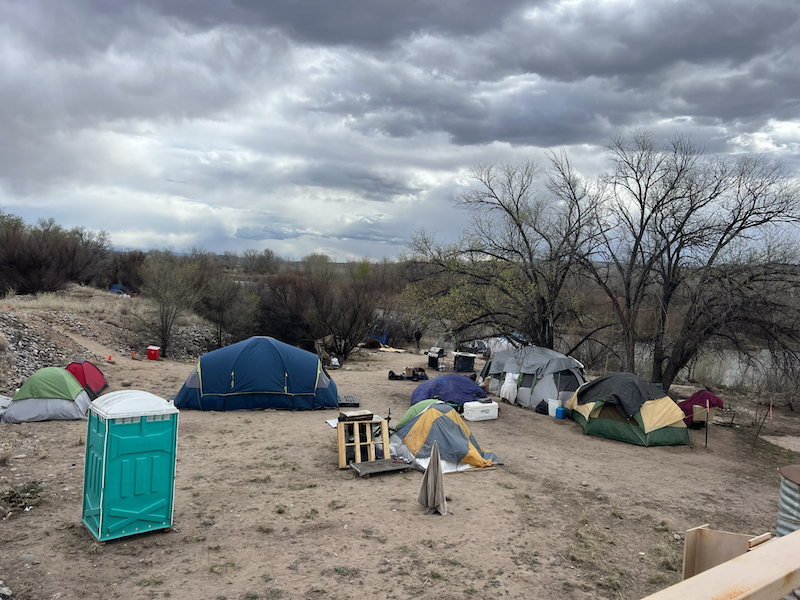 A homeless encampment in Española, pictured in April 2024. Gov. Michelle Lujan Grisham on Tuesday announced the state this month will begin sending more than $120 million in funding to help make a dent in New Mexico’s affordable housing and homelessness crisis. (Photo by Patrick Lohmann / Source NM) New Mexico Gov. Michelle Lujan Grisham announced Tuesday that housing funds the state Legislature approved this year will soon leave state coffers as agencies try to address an affordable housing and homelessness crisis here.
Between the last two legislative sessions, the Legislature has dedicated more than$300 million to various housing-related measures at different agencies, including revolving loans for builders, down-payment assistance and anti-homelessness programs. That figure includes $140 million lawmakers approved this session. In a news release Tuesday, the governor said that the Office of Housing within the New Mexico Department of Workforce Solutions will distribute $120 million of that funding beginning this month. “These investments prioritize solving New Mexico’s housing crisis through focused investments in affordable and attainable housing, support for prevention, and proven solutions to the challenge of homelessness,” the governor said in a statement. “When we face a challenge of this magnitude, we must take an ‘all the above’ approach.” According to the news release, the funding includes:
According to recent estimates, the state lacks more than 32,000 housing units. Rents and homelessness have increased far beyond the national average in recent years, especially in Albuquerque, the state’s biggest city. The newly created Office of Housing, which was transferred to DWS shortly after the session, is overseeing the spending, according to the news release. DWS Secretary Sarita Nair said the funding will go toward “proven strategies” for tackling the housing crisis. That means focusing on building more housing, preventing homelessness and ensuring that people who move into homes after living on the street have “wrap-around support and thoughtful interventions,” she said in the news release. The governor’s office expects the initial round of funding will result in the creation and support of more than 1,500 affordable housing units, more than 1,500 shelter beds, more than 150 transitional housing units for people leaving shelters and prevention programs to help more than 3,500 families avoid falling into homelessness. It will also support street outreach with support services for people who live on the streets, according to the news release. A pair of panting crows peers down from a cottonwood perch, croaking when I pass. Yellow breasted chats call from brush along the river channel. And a single, dazzlingly white egret hops knee-deep into a warm, brown puddle, stabbing the water for fish.
Traffic roars across the Central Bridge in Albuquerque, and the tiny fish in the puddle at my feet flurry back and forth, seeking shade or safety or some way out. Fish larger than my thumbnail have already died in the dry channel. For almost 30 years, the Middle Rio Grande has dried in the summer south of the state’s largest city. When the drying also reached the Albuquerque stretch in July 2022, people rushed to the riverbed, peering over the bridges, posting their grief on social media. Now, here we are again. This year, drying in the Middle Rio Grande began in April — and this week, New Mexico’s largest river ground to a halt in Albuquerque. Irrigation canals are already empty; months ago, the Middle Rio Grande Conservancy District warned farmers and homeowners irrigation season could end as early as May. For now, cities like Albuquerque will shift toward pumping groundwater. And most of us won’t notice any big changes in our daily lives. Meanwhile, every time the river dries, the more-than-human world suffers. At first, predators feast on the dead and dying fish. It’s noisy as birds clamor and flies and other insects swarm the fish carcasses. Then things get quiet. Beavers disappear. Coyotes, foxes, badgers, skunks, cottontails, bobcats, and other wildlife become increasingly desperate. Swallows and songbirds die or move on once there aren’t insects. Ducks, killdeer, cormorants, geese, herons — and in fall, sandhill cranes — have no water. The young waterbirds die first; they can’t fly away from predators or toward another flowing stretch of the river. Soon, even the turkey vultures leave, kettling up in committees of 50 or 100 birds. Drying reverberates throughout the system, killing and stressing trees, increasing fire risks, devastating groundwater supplies — and making the future less secure, not just for the species we share our state with, but for humans, as well. For more than 20 years, I’ve reported on river drying, for print, online, radio, and television news outlets. During that time, I’ve never heard a coherent, factual, or honest argument that a dry riverbed benefits humans. And I’m never going to stop saying this: New Mexico’s rivers deserve rights to their own waters. Especially in a warming world. Right now, billions of people across the world are experiencing extreme rain events, catastrophic wildfires and the floods that follow, longer and hotter heat waves, melting glaciers, rising seas and expanding aridity. Here in New Mexico, we’ve known for decades that the state is warming, snowpack is decreasing, forests are drying out and climate change is wreaking havoc on our farms, rural communities, ecosystems and wildlife. Given the current state of our nation, some state and local leaders might say it’s still not time for state and local climate action. Some people will be well-meaning or earnest; others will continue to mimic disinformation campaigns from industries like oil and gas. But we know that the Trump administration’s actions on climate change will cause devastating, long-term harms to people and our planet. And while it’s tempting to dismiss these actions as ignorant or haphazard, they are not. To be clear: The administration’s actions are deliberate, calculated and carried out by “climate realists” like U.S. Department of Energy Secretary Chris Wright, who told The Guardian earlier this year, “The Trump administration will treat climate change for what it is, a global physical phenomenon that is a side-effect of building the modern world,” adding: “Everything in life involves trade-off.” When I walked to the Rio Grande this morning, I felt ashamed to stand in her broken river channel — again — and ashamed to think of the trade-offs we accept, while the more-than-human world suffers for our actions. And inaction. With the crows watching, the chats calling and the egret hunting, I thought about what it’s been like, year after year, to watch a river dry and an ecosystem and its species suffer. And I know that in this moment, it’s time to take a bird’s eye view of our rivers and watersheds, to peer down into the landscape and see what we can do -- as a state, within our local communities and neighborhoods and even in our own yards. It’s time to decide what we’re willing to trade, and what we’re unwilling to let die. State’s high error rate for SNAP could cost hundreds of millions BY: PATRICK LOHMANN Courtesy of Source NM 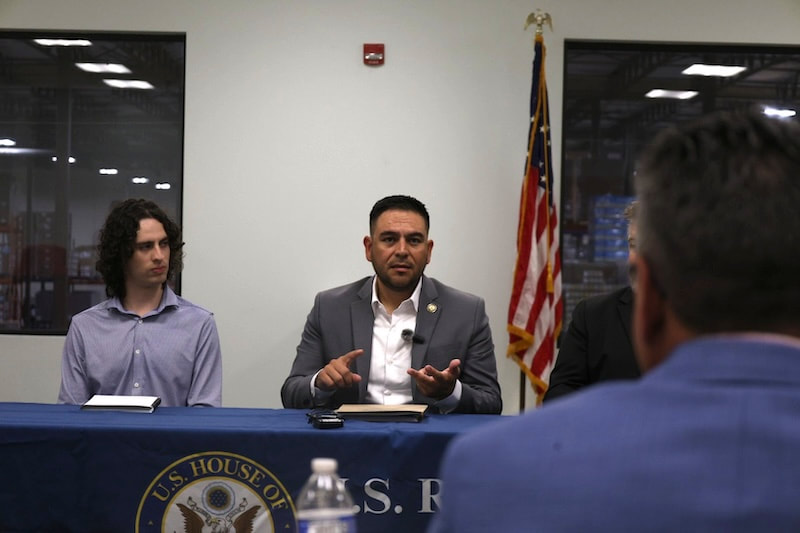 U.S. Rep. Gabe Vasquez, center, gathered leaders of health, housing and food nonprofits to discuss how recently enacted federal cuts will affect New Mexicans, along with how the spending bill will increase prices on health insurance, housing, energy costs and nutrition. (Photo by Patrick Lohmann / Source NM) Cuts to the country’s food assistance programs in the recently enacted Congressional spending bill will leave food banks and other charities across the state with less food to feed longer lines of hungry people, leaders warned Monday at a roundtable with U.S. Rep Gabe Vasquez. The federal Supplemental Nutrition Assistance Program, which gives low-income families money to spend on groceries, currently provides nine times as many meals across the state and country as the entire nationwide network of food charities, Jason Riggs, community initiatives manager at the Roadrunner Food Bank, told Vasquez and other nonprofit leaders at the roundtable. In New Mexico, more than 500 shelters, pantries, schools and hot-meal sites comprise the state’s “food bank,” he said, and that whole network provides only a fraction of what SNAP delivers for families. “There’s no way we can just suddenly multiply everything we do times nine to make that happen. We couldn’t do that in 10 years,” Riggs said. “No business can grow nine times. So any thoughts that, ‘Well, charity will take care of this,’ are very misguided.” Vasquez, a New Mexico Democrat who represents the state’s 2nd Congressional District in the southern portion of the state, gathered leaders of various nonprofits handling housing, healthcare and nutrition at the food bank’s headquarters to elicit testimony about how the cuts will affect New Mexicans, along with how the spending bill will increase prices on health insurance, housing, energy costs and nutrition. Regarding SNAP, Vasquez told Source New Mexico that the upcoming Farm Bill presents Democrats with an opportunity to undo some, but not all, of what the “Big, Beautiful Bill” will do. The Farm Bill sets SNAP funding levels and other food-related policies. “Republicans are going to propose a skinny Farm Bill, which is a watered-down version of the Farm Bill. They’re going to want to have some bipartisan support for that, and we’re not going to give it to them unless we get some concessions back on the priorities that we have,” he said. While he doesn’t think Democrats have enough leverage to make Republicans completely reverse their SNAP cuts or other policies they just enacted in the spending bill, he said one concession he’ll push for relates to states like New Mexico that are deemed to have high SNAP “error rates.”
The bill currently penalizes states that are found to over- or under-pay SNAP recipients at high rates by making them share a portion of the costs the federal government currently pays to SNAP recipients. In New Mexico, the federal government currently shoulders 100% of the more than $1 billion in annual spending to SNAP recipients. But under the bill, New Mexico will have to share 15% of the total SNAP spending New Mexicans receive because of its high error rate. New Mexico’s rate is 14.6%; the national average is 9.83%. Vasquez said he hopes to push Republicans to change both the way the error rate penalty is calculated and give states longer grace periods to bring their rates down to avoid the penalty. “I think those are common-sense proposals that Republicans should accept, but I don’t expect to reverse a lot of that stuff, considering what it represents to the President’s overall agenda,” he said, which is “to cut Medicaid and to cut SNAP and to give taxes to the rich. Otherwise you won’t be able to pay for those tax cuts.” States with rates above 10% incur the 15% fee, the highest penalty, which amounts to about $173 million, according to a presentation Monday from the Legislative Finance Committee to an interim legislative committee. Even though New Mexico faces a big error rate penalty, LFC analyst Austin Davidson also noted Monday that a provision in the bill allows states with high rates to wait longer before paying the penalty. Assuming the state’s rate stays high, New Mexico won’t pay the penalty until October 2028 at the earliest, Davidson said. Nonprofit leaders at the roundtable later Monday said that the state’s error rate often comes from systemic problems at the state level, not fraud at the individual level, and mistakes are often quickly caught and corrected. According to a presentation from state Health Care Authority officials to the same legislative committee, analysts attribute 35% of the state’s error rate to “agency-caused” miscalculations of benefits or use of outdated information. To bring down the rate in New Mexico, Health Care Authority officials recommended increasing caseworker training at the authority’s Income Support Division, along with improving information technology system changes to ensure quality control. The error rate cost is among hundreds of millions of dollars the state is anticipating losing in SNAP funding in the state with the highest rate of SNAP recipients. More than 450,000 New Mexicans use SNAP assistance, which is more than one-fifth of the population. All of them could see reductions in the amount of assistance, according to the Health Care Authority presentation. In addition, about 40,000 New Mexicans will likely lose their SNAP benefits completely due to new work requirements or their immigration status. As for retailers, about 1,700 gas stations, groceries, convenience stores and farmers’ markets statewide stand to lose about $1.3 billion in SNAP revenue. Ari Herring, executive director of Rio Grande Food Bank, warned at the roundtable that all the cuts and costs facing the state will coalesce into a much bleaker food system for New Mexicans. “We’re gonna see much, much longer lines. We’re gonna see people highly stressed about affordability, and we are gonna have less resources to answer that need,” she said. “It really is a perfect storm.” The Midweek Newsletter By Trip Jennings Courtesy of NM In Depth This week’s newsletter is a tale of four numbers that are important as Gov. Michelle Lujan Grisham and the Legislature could head into a special legislative session in the coming month to respond to lower levels of federal dollars flowing into New Mexico.
The $485 million is the estimate by which revenue will outpace spending for the fiscal year we’re in now, which runs from July 1 to next June 30. The $200 million, on the other hand, is how much New Mexico can expect to lose per year on average between the current fiscal year and fiscal year 2030 due to the budget reconciliation bill President Donald Trump signed into law last month. The $4 billion is the amount of operating reserves tucked away in the event New Mexico is hit with an emergency. State lawmakers took in these numbers during a Tuesday presentation from state economists and officials in the Lujan Grisham administration. While the numbers don’t paint a rosy picture exactly, it is not as dire as some might have expected for a state more dependent on federal dollars than almost any other in the country. New Mexico finds itself adjusting to a Trump administration that is determined to cut federal social safety net programs that New Mexico relies on to plan its annual budget. If you’re a budget nerd, a nifty graphic on the Legislative Finance Committee website shows where New Mexico’s revenues come from — it’s an assortment of taxes and interest earned on investments — and how much revenue flowing into the state’s coffers has grown over the last decade. A decade ago, state revenues came in just under $6.5 billion. This fiscal year, they are expected to top $13.7 billion, or a difference of $7 billion. The growth largely has been driven by a historic period of oil and gas production that is expected to produce $3 billion in revenue, or nearly $2.2 billion more in revenue than in the 2017 budget year (We’re in the 2026 budget year). Revenue earned off the state’s investments has also grown by more than $1.4 billion, from under $750 million in 2017 compared to an expected $2.2 billion for this budget year. Also noteworthy: revenue produced by the gross receipts tax, New Mexico’s largest pot of state dollars, has jumped by $2.3 billion over the past decade, from $2 billion to $4.3 billion. As to whether this assortment of revenues will be enough to make up for a reduction of federal spending over the long term is anyone’s guess. But for the short term, New Mexico seems to be in a good place, according to Wayne Propst, who leads Lujan Grisham’s budget agency. “Despite the external challenges New Mexico will face in the years ahead, our state has the resources to remain stable and on solid footing,” Propst said in a statement Tuesday. “Our healthy additional revenue provides the capacity for a special session, giving lawmakers the ability to address funding gaps in essential services that we’re already seeing.” Added Taxation and Revenue Secretary Stephanie Schardin Clarke: “New Mexico’s economy remains resilient despite challenges presented by federal actions. State policymakers have put New Mexico on a financial bedrock to endure for decades to come.” NUMBER OF THE WEEK
$7 billion The growth in revenue flowing into New Mexico over the past decade. SANTA FE – Today, New Mexico Gov. Michelle Lujan Grisham declared a state of emergency in Rio Arriba County, the city of Española, and area Pueblos at the request of those governments in response to a significant surge in violent crime, drug trafficking, and public safety threats that have overwhelmed local resources.
The emergency declaration comes as police calls in Española and surrounding areas have more than doubled in the past two years. Police dispatches to businesses in the area have quadrupled in the same period. Rio Arriba County currently has the highest overdose death rate in the state, with residents struggling with addiction to fentanyl and other illicit substances. “When our local leaders called for help to protect their communities, we responded immediately with decisive action,” said Gov. Lujan Grisham. “We are making every resource available to support our local partners on the ground and restore public safety and stability to these areas that have been hardest hit by this crisis.” Executive Order 2025-358 authorizes up to $750,000 in emergency funding for the Department of Homeland Security and Emergency Management to coordinate response efforts and provide resources to affected communities. The surge in criminal activity has contributed to increased homelessness, family instability and fatal drug overdoses, placing extraordinary strain on local governments and police departments that have requested immediate state assistance. The emergency declaration will remain in effect until all authorized funds are expended or emergency assistance is no longer necessary. United Way Northern New Mexico Named Regional Resource Hub for Northern NM Youth Fund Grantees8/14/2025 FOR IMMEDIATE RELEASE
August 11, 2025 Contact: Cindy Padilla | [email protected] | 505.216.6347 Website: www.unitedwaynnm.org/news/uwnnm-named-regional-resource-hub United Way Northern New Mexico Named Regional Resource Hub for Northern NM Youth Fund Grantees $122,700 Grant Will Support Capacity-Building, Collaboration, and Expanded Opportunities for Youth Across the Region Española, NM — United Way Northern New Mexico (UWNNM) has been selected to serve as the official Regional Resource Hub for the Northern New Mexico Youth Fund, receiving a $122,700 grant to lead technical assistance, shared learning, and capacity-building support for grantees advancing youth opportunity in seven Northern New Mexico counties. As the sole Resource Hub, UWNNM will provide strategic resources to a cohort of Tribes, nonprofit organizations, and schools focused on career technical education, work-based learning, leadership development and transition supports for underserved young people, especially opportunity youth (individuals between the ages of 16 and 24 who are neither enrolled in school nor participating in the workforce,) Native American youth, and young parents of young children. “This is more than a grant—it’s a new way to support critical services for sustained impact,” said Cindy Padilla, Executive Director of UWNNM. “We’re honored to serve as the connective hub for a powerful network of organizations that are helping young people chart pathways to purpose and possibility. Together, we’re building a movement grounded in equity, collaboration, and opportunity.” In this new role, UWNNM will:
“The Northern New Mexico Pathways to Opportunity Strategy Table is thrilled to partner with United Way Northern New Mexico as our Regional Resource Hub,” said Alvin Warren, Vice President of Policy & Impact for the LANL Foundation, which serves as the backbone organizationfor the Strategy Table. “In supporting the inaugural cohort of 19 Youth Fund grantees, we know that UWNNM will strengthen the capacity of our whole region to better serve young people.” By organizing and energizing this network of 19 grantees, UWNNM aims to break down silos, share what works, and dismantle systemic barriers that have long limited opportunity for youth and families across the region. The Northern New Mexico Youth Fund pools philanthropic and public funding to provide grants of 50-100k to each grantee. This is an initiative that aims to transform outcomes for youth and young adults by investing in organizations that understand the challenges—and potential—within their communities. With UWNNM at the helm of the Resource Hub, grantees will be better equipped to sustain their work, scale what’s working, and drive long-term change. About United Way Northern New Mexico United Way Northern New Mexico serves Los Alamos and Rio Arriba Counties by supporting nonprofit organizations, strengthening community networks, and investing in programs that promote health, youth opportunity, financial security, and community resiliency. Through collaborative efforts like Collective Impact and the Regional Resource Hub, UWNNM works to create lasting solutions and brighter futures for Northern New Mexico families. Visit unitedwaynnm.org to learn more about United Way Northern New Mexico and how you can support their impact in the Northern New Mexico region. Contact: Cindy Padilla Executive Director United Way Northern New Mexico 505.216.6347 [email protected] www.unitedwaynnm.org PO Box 539, Los Alamos New Mexico 505.662.0800 |
Submit your ideas for local feature articles
Profiles Gardening Recipes Observations Birding Essays Hiking AuthorsYou! Archives
September 2025
Categories
All
|
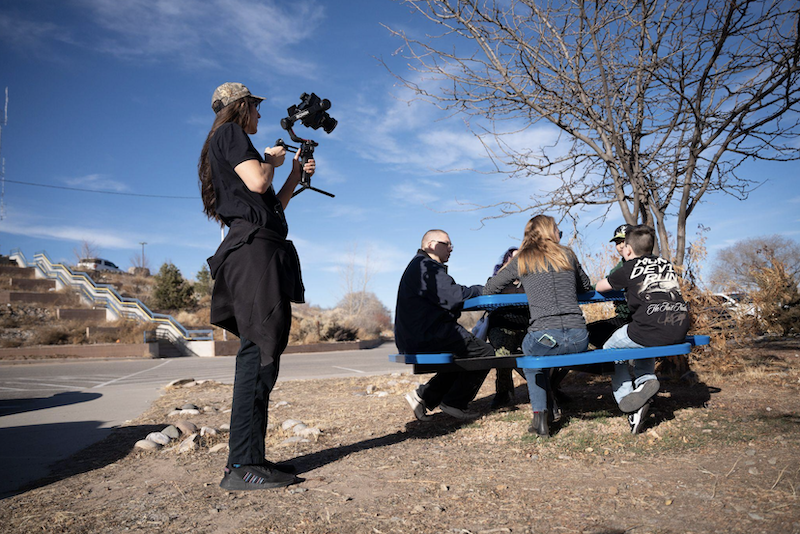

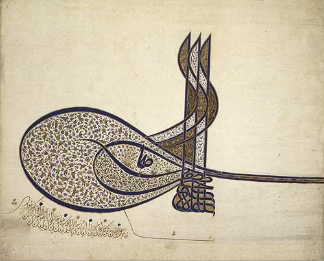

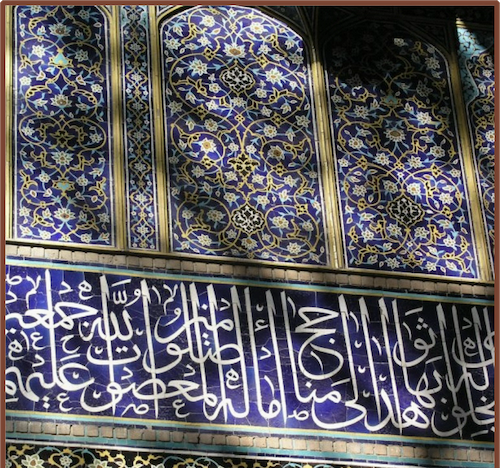
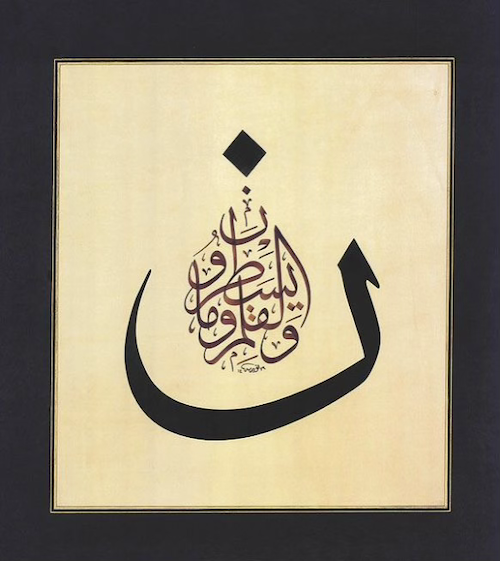
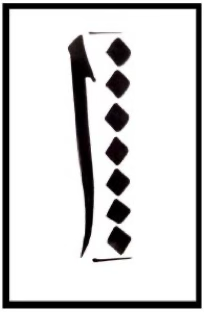
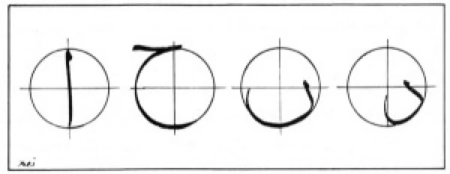

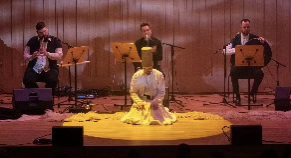
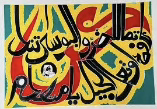


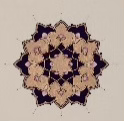
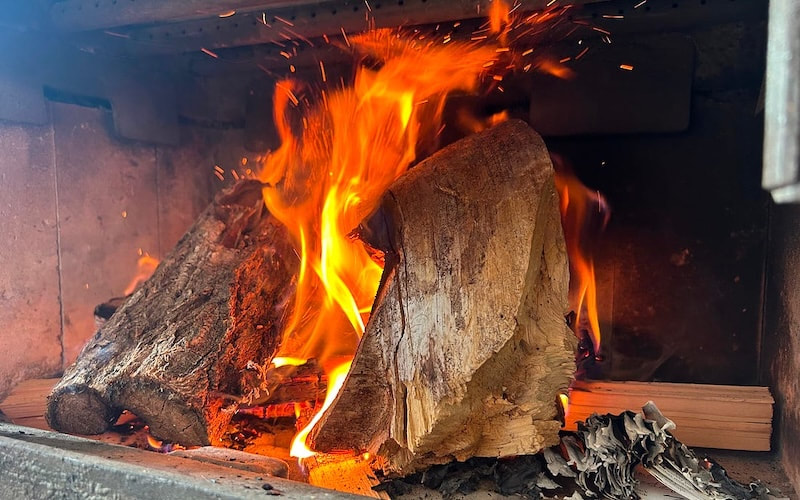
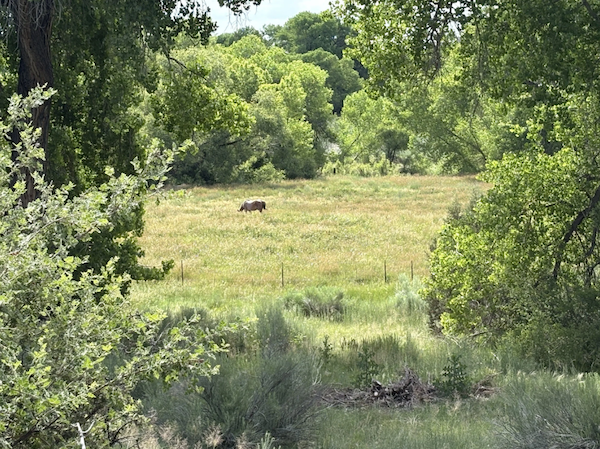
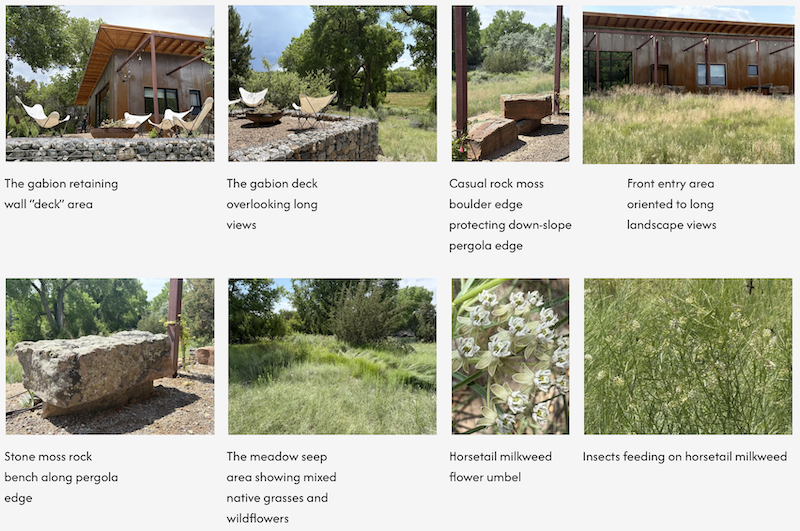
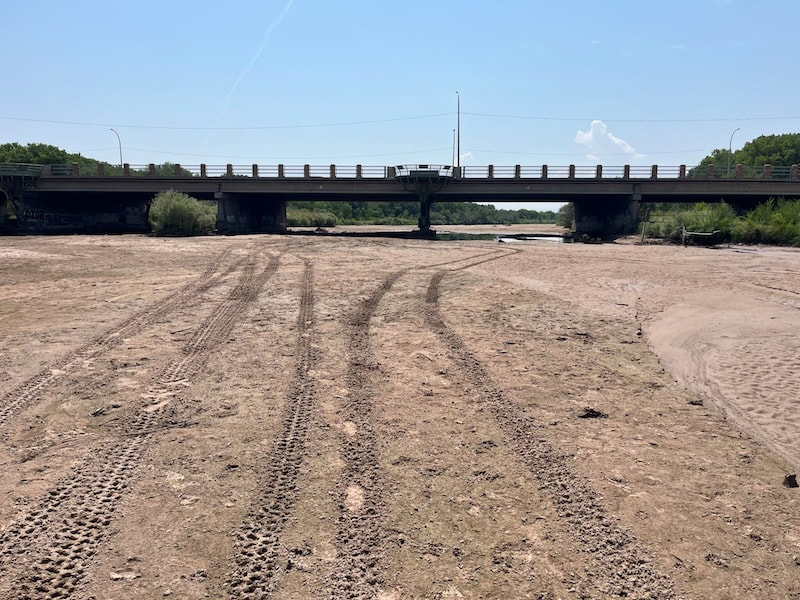
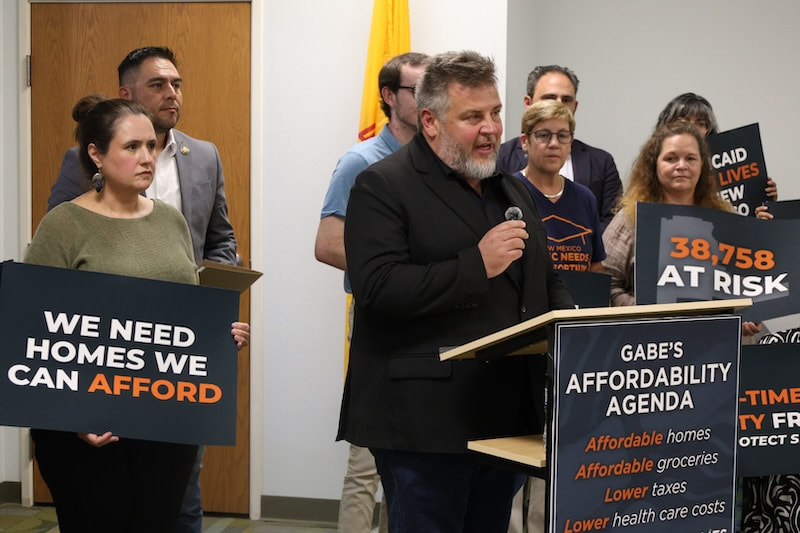
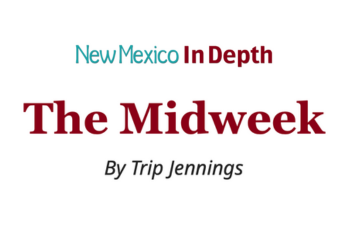
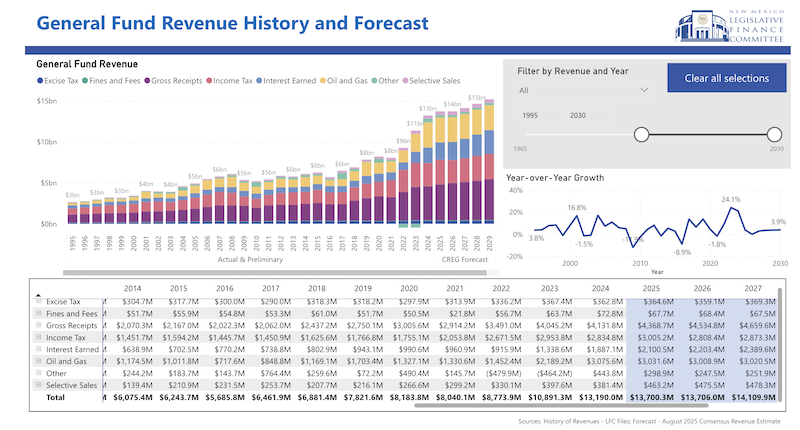
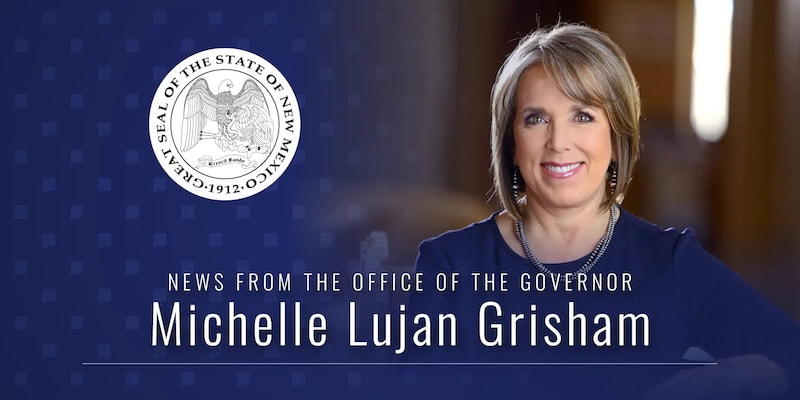
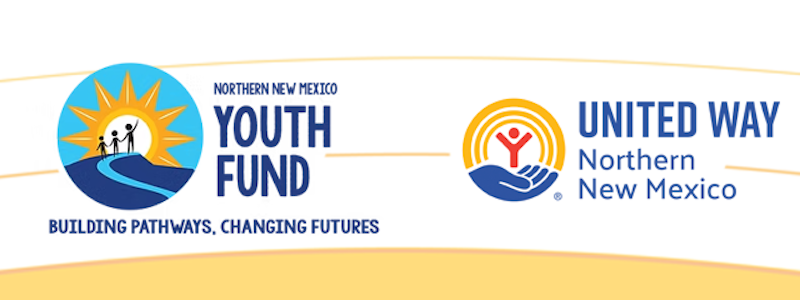
 RSS Feed
RSS Feed